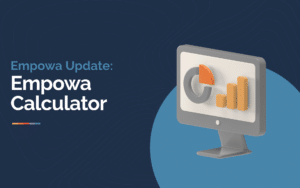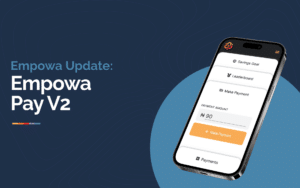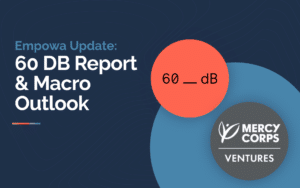We’ve recently launched The Empowa Vault! This poses the question: How do RealFi loans differ from the more common Defi approach?
Defi Collateral Explained
Before receiving a DeFi loan, a user must deposit and lock another cryptocurrency as collateral. The user can now receive a loan whose value is some percentage of the value of the locked funds. The user’s loan – their debt – is backed by the value of their collateral. For this reason, this type of loan is often called a collateralized debt position, or CDP.
If the value of the locked collateral in the CDP drops too low, the borrower must add more funds or else their collateral will be liquidated to compensate the lender in full.
In most cases, the money loaned through Defi platforms is used for other crypto trading activities like leveraged trading. This means the funds loaned and the collateral are all very closely interlinked. For example, if the value of the collateral is down it is likely that the trader borrowing funds may also be down on their trade elsewhere. This makes it harder for them to service the loan and increases the chances of liquidation.
If asset prices fall sharply, many borrowers may be unable to service their loans and many collateral positions may be liquidated simultaneously. This can push asset prices down further, putting even more borrowers at risk. This creates a vicious cycle – a race to the bottom – in which the price of the token used for collateralisation plummets in value as more liquidations occur. In this way, the interdependence among Defi systems can increase the chance of contagion and negative feedback loops in lending platforms.
Empowa’s RealFi Collateral Explained
The Empowa solution is very different. In Empowa’s loans, the EMP tokens are used to collateralize a much a smaller portion of the total loan. This greatly reduces the impact of market fluctuations on the health of the system. Moreover, in the event of liquidations, the smaller proportion of tokens as collateral means the token price will not be affected enough to create a market spiral.
What constitutes a default is also very different in our project. In DeFi, if the underlying collateral drops in value and is not topped up in time, a smart contract will liquidate all the collateral to protect the lender. In our rent-to-own contracts, a developer missing their payment could, up to a point, use any of the equity they have already saved to make the minimum payment. You can find out how loan health is scored on a traffic light system here.
Ultimately, the robustness of this system relies on the real-world nature of our platform. Our loans are not serviced via DeFi trading activity but rather via real people paying their own living expenses. In fact, most of the users of Empowa might never know anything about DeFi. Instead, the developers’ payments to Empowa rely on the tenants’ payments to the developers. These tenants are regular people who are motivated to both maintain their housing and also accrue equity via our innovative rent-to-own system. The value of affordable housing, and especially leasing-to-own, is so immense that an individual will go above and beyond to make their rent payments and avoid eviction. This significantly decreases the likelihood of missed payment even in difficult economic conditions. Because of this real world context, we have observed so far that there is a relatively low frequency of default. To find out how our homes have performed over their first three months click here.
The fact that Empowa’s loans are rooted in valuable real world assets also creates resilience and flexibility. Imagine a scenario in which a developer struggles to make loan payments because of a defaulting tenant. The inherent demand for affordable housing, along with our rent-to-own system, allows the developer to easily replace a non-paying tenant with a new tenant who will pay consistently. In contrast, classic DeFi systems are much more fragile because they do not allow the transferral of the loan to another borrower, increasing the risk of loan default.
So default would only occur if the minimum payment on development has been missed and there is no clear path to catching up on the payment. Note that Empowa Pay will record all developer payments on-chain for transparency and accountability. These wallets will be shared publicly for improved transparency and public audibility.
Not only is risk reduced via this resilience and transparency, but the risks that remain are also minimised via geographic diversity. In classic DeFi, the interdependence of platforms creates brittle systems susceptible to contagion. In contrast, Empowa’s diversity of developers creates strength. One developer missing their payment is unlikely to increase the chance of another developer missing a payment. After all, a development in Mozambique may underperform, but this doesn’t mean another development in Nigeria is more likely to also struggle.
Watch Andrew Forson, our Head of Analytics and Risk, explains how we manage default risk with developers
Of course, there is always the risk of a black swan event that could cause a default on a large level. In reality, however, this risk will quickly diminish as we expand to more developers creating more developments in various countries. A natural disaster affecting development in Mozambique would leave developments in Nigeria unscathed. In this sense, Empowa’s real world presence reduces risk geographically in a way that DeFi simply cannot. To find out about our newest service delivery partner in Nigeria click here.
In summary, Defi crypto loans rely too heavily on other crypto traders and other DeFi platforms. This creates cyclical codependency and high-risk in DeFi systems. In contrast, Empowa’s approach ties crypto returns to real-world assets and processes, thereby reducing risk and increasing resilience.





